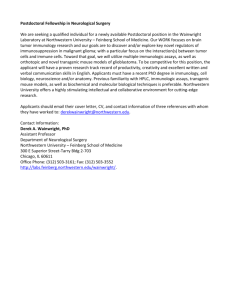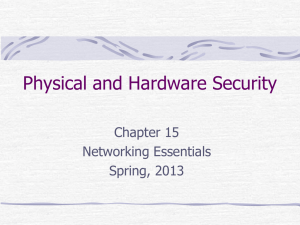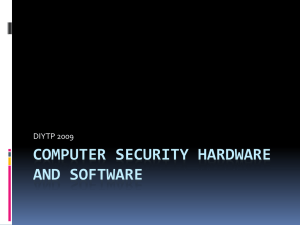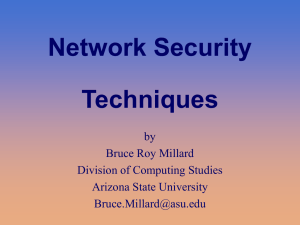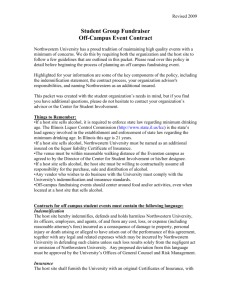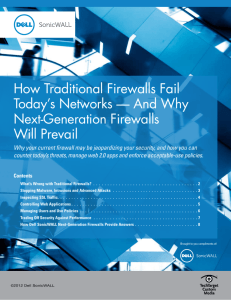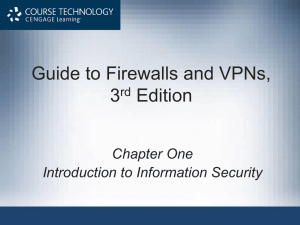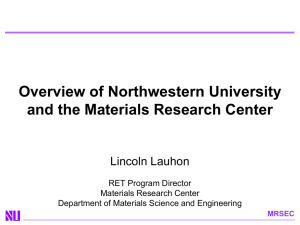Mobile Device Management - Northwestern University
advertisement
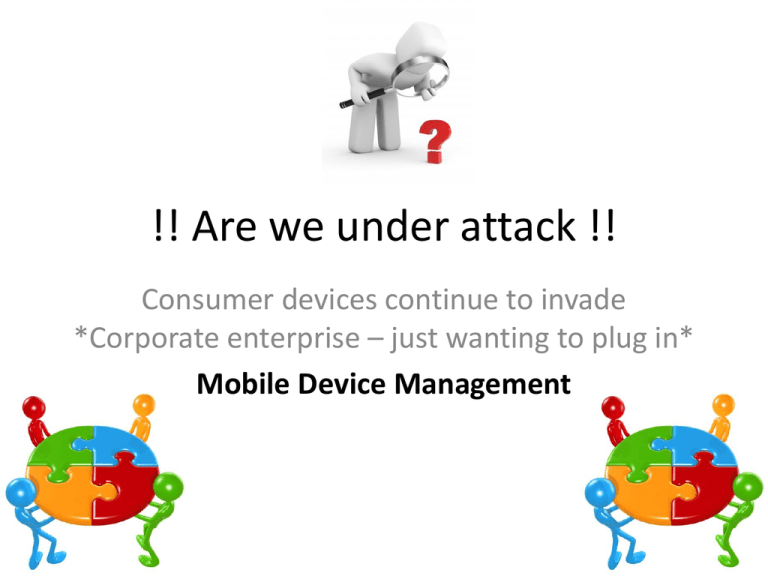
!! Are we under attack !! Consumer devices continue to invade *Corporate enterprise – just wanting to plug in* Mobile Device Management Market Overview How It Got Here Northwestern University Graduate Team – Praxiteles. 2012 Where It’s Going • The main devices for corporate productivity used to be the desktop or laptop computer. • Mobile device management as a hub for managing a variety of corporate and personal • RIM’s BlackBerry opened the door for smartphones as business tools. • Security is a focus of most MDM vendors. • Employees began bringing their own non-BlackBerry devices into work, and demanding that they be able to connect them with corporate resources • Mobile devices are increasingly application platforms. • Mobile technology will continue to change rapidly We must continue to focus on solutions that offer us Enforced Passwords, Device Wipe, Remote Lock, Audit trail/logging, Jailbreak detection, Software Distribution with Application downloading, updating and verification support, external memory blocking and configuration change history. Bring Your Own Device is seen to be complex, expensive, and dangerous especially for Data Security If employees are using their own devices, legitimate questions include: •How can IT protect the corporate data from corruption, misuse, or theft? 19% 23% •How can efficient use of company-owned applications be supported on a device with non-standard configuration? •How can the employee install a needed application even when their device uses a different operating system or operating system version? •Who is responsible for taking care of his or her asset; •How can the organization protect centrally located data if it can’t ensure that a device is properly secured? Northwestern University Graduate Team – Praxiteles. 2012 3 Bring Your Own Device – Mobile Security Security Network Architecture Security Network Architecture Typical Components •Gateway firewalls •Dual gateway firewalls •Internal firewalls •Gateway anti-malware •Endpoint anti-malware •Dual Internet connections •Segmented networks •Tiered networks •Virtual Private Networks (VPN) •Intrusion detection & prevention •Content filtering •Data Leakage Protection (DLP) •Network Access Control (NAC) •Endpoint encryption •Enhanced authentication •Security management technologies Northwestern University Graduate Team – Praxiteles. 2012 4 Risk Tolerance: Low Presence of Sensitive Data: Yes Remote Users: Yes Hours of Operation: 24/7 Online Business: Yes Secure access from the Bring Your Own Device to our company networks and data Options & considerations for internal connection of BYO devices to business networks: • Direct connectivity. The BYO device can connect in the same way(s) as any company-owned asset. • Limited connectivity. Only allow authenticated access to specific, limited services or resources. • No connectivity. Only allow strongly-authenticated access to secured, services (SMTP, IMAP, HTTP, RDP/VNC). The following technologies are worth considering: Network Access Control (NAC). Firewalls & static VLAN assignments. Desktop Virtualization. Multi-factor authentication. Secure remote access. Northwestern University Graduate Team – Praxiteles. 2012 5

